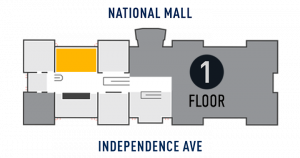Pratt & Whitney Twin Wasp R-1830-92 Radial Engine
Designed in 1930, the 14-cylinder, 597 kW (800 hp) Twin Wasp engine was first used in the Martin 130 China Clipper that inaugurated trans-Pacific commercial operations in 1935.
United Air Lines had 746 kW (1,000 hp) Twin Wasps installed in their Douglas DC-3As, which went into service in 1937. Other airlines also used Twin Wasp DC-3As, and 9,600 were built for the military as the C-47, C-53, and C-117 to become the principle transports used in World War II.
This version powered the Douglas C-47A, C-48, C-52, and C-53, all commercial or military versions of the DC-3. A total of 173,618 of all versions of the Twin Wasp engines were manufactured, including those for the World War II B-24 bomber, a number greater than any other large aircraft engine.
This object is on display in America by Air at the National Air and Space Museum in Washington, DC.

Support: 121.9 × 215.9 × 121.9cm (48 × 85 × 48 in.)
For more information, visit the Smithsonians Terms of Use.